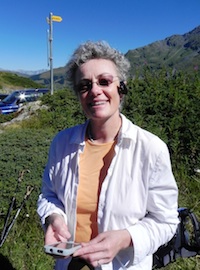Producing video content is said to be the way of the future. Every time I've attempted to develop a short video, I've found it difficult, orders of magnitude more effort than simply posting 500 words in a blog (and that is more difficult that it sounds). How are we going to overcome the barriers to video publishing? Perhaps a flying smart camera?
There will be many new tools coming out to help people who capture their lives (more or less continually) with video. For example, if using the Google Project Glass device, a person could log their lives (and their baby's life) and accumulate content quickly. But I've discovered since I started wearing the Looxcie X2 camera that it's not the capture of video that's the most difficult, it's making sense of it!
I'm bringing up these points because they converge precisely with a post I saw on TechCrunch. When the editors at TechCrunch announced in May that they were starting a series on "makers," as those who build hardware for business or pleasure are called in our circles, I perked up. In only the fourth episode, I learned about something that hits two of my key words: computer vision and programmable board.
The company featured in this video segment is Centeye, the maker of computer vision chips that have become the basis of the ArduEye, an open source project putting machine learning computer vision on Arduino.
Why is this important? Because it demonstrates that making sense of the video can be done with very little computational overhead. This diagram compares the vision chip with a CMOS camera that pushes all the pixels it captures to a CPU for storage or analysis (click on the figure to see an enlargement):
Now, this alone might not get your interest, however, in order to demonstrate the advantages of the low power/low computational overhead they put the board on a set of blades and made it into helicopter. You need to watch this video!
This might remind you of the Parrot AR Drone, but it's better because it doesn't require an iPhone.
Perhaps, in the place of or in addition to an HD camera on a pair of glasses, there could be a vision chip that helps to edit the captured content. This is already done in head mounted cameras for the defense sector, I'm told, however, it must be produced at low cost, low weight and low power consumption for the rest of us to benefit from these breakthroughs. I hope to see these chips used more widely when there are more people doing projects with ArduEye.


